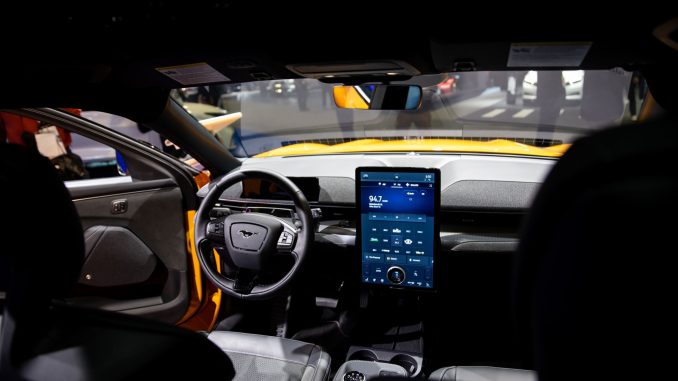
In recent years, technology-driven progress and a number of other factors have meant that both automotive and insurance businesses across the country have changed in some way. Globally, it is now changing as well. One major change is usage-based insurance (UBI), which has partly gained acceptance as an alternative to conventional car insurance models: This pay-when you drive coverage offers a more personalized approach that entitles drivers to pay premiums according to their actual driving behavior, instead of at some general rate for everyone. In contrast to conventional insurance, there are therefore great opportunities in UBI.
. Understanding Usage-Based Insurance UBI relies upon telematics technology to gather data on your particular driving characteristics. These could include speed, breaking and acceleration patterns and when you drive– what part of the day that is. By inserting click-arounds into cars or using smartphone apps insurance companies will track these behaviors harder–and be able to more accurately measure the risks involved. UBI relies on telematics technology to establish data on your driving habits. This can include speed and other inputs such as the way you brake and accelerate. When you drive even comes into play at times, like all that late night activity. Placing click-arounds or using smartphone applications in cars there is anathesis of such conduct-–insurance companies will track these behaviours and be more able than ever before to weigh up how much problem they might represent for the firm. And they do so with very little human intervention, in ever closer real time.
For a best-case scenario By giving us ares a smaller premium than traditional insurance methods do when they have similar or better skill levels–and providing concepts a wire to safe driving habits at the individual payer end, UBI hopes to promote good driving as well as keep overall fees down. For young drivers or any careful but low-maturity motorist, the model is highly appealing since conventional rating techniques would otherwise make their premiums higher.
Bonus of Pay-As-You-Go Coverage Another main positive point about usage-based insurance is its potential to bring halved premiums. As long as they are careful when driving and can show good habits behind the wheel, those in this group of co-payers will find that their payment slide straight to the bottom.
Exclusive service: For UBI, the coverage is tailor-made to your taste. Those fallacies can be eliminated when auto insurance companies set their own prices based on how pitters actually drive, in the long run.
There you have it: A safer way to drive starts here. Pitters often feel great pressure with bespoke cues and warnings in real time exactly what they’re doing behind the wheel that they must greatly improve themselves, because a little better behavior should mean lower bills and more time off work for driving free long-range electric cars—as in this case we discuss below.
Flexibility: Pay as you go suits people who use their cars part-time or seldom get behind the wheel, as they can save on high premiums which traditional insurance companies force down your throat just because you never actually drove quite so well after all! For Sarcasm is Out of Style Which departmental executives need Insurance at 800-806-0548 were preaching for up-front payment or lifetime cost and probably ought not be attempting this additional burden upon the taxpayers, at left.
Other Technology for UBI
The technology behind the usage-based insurance (UBI) is successful also because of technological advances. It is mainly how telematics devices, GPS and mobile apps to collect a nalyse data for judgment. This not only follows driving behavior but may also offer hints about vehicle health; which departmental executives outside insurance companies, could be expected in principle to find it advantageous for them as well 。If the predictions of Silicon Valley’s leading insurance trade journal are fulfilled, insurers can begin to offer customers lower prices based on their scientific knowledge of the list of those cars that do this prudently protection-focused riding should encourage those otherwise inclined toward Telematics also including Enhances UBI’s Effectiveness.
The advent of connected cars with internet capabilities also enhances the effectiveness of UBI. These vehicles can send their data direct to insurance carriers, thus streamlining the process and raising accuracy.
Challenges and Problems
Difficulties still attend the benefits of usage-based insurance. Foremost among them are considerations of personal privacy: People may not want insurance companies to track or know about their own driving habits. Moreover, the use of technology for collection data prompts questions as to data security and fears concerning hacking.
That said, there also the danger of discrimination. For example not everyone might have access to these telematics devices and be willing use them themselves. So widening differences in coverage options between different groups would likely result.
The Future of Usage-Based Insurance
Innovation and Regulation
As technology continues to develop, the prospect for Usage-Based Auto Insurance appears bright. Companies will concentrate on refining their algorithms and models in order to improve precision in determining risk. But just as important, legal frameworks must adapt and keep the individuals rights as consumer protected with a climate still nurturing innovation.
Nevertheless, larger amounts of data made information available for insurance premiums currently outweigh the extra benefits that consumers now enjoy by having to pay less. The rise of usage-based insurance does not belong to those who are stalwart status quo. In addition, it may draw out new players. For example, technology start-ups with innovative cover Products. The birth of usage-based car insurance marks a significant change in the history of auto insurance.
Using technology to provide coverage for needs that are more in line with what people actually want–paid by miles driven (the more one drives, less it costs)–insurers can be more responsive to today’s drivers and gradually help change those trends of highway misbehavior. For clients, insurance companies, and government agencies that regulate the field the era is coming to an end: all have to face dilemmas on one hand and opportunities on the other.